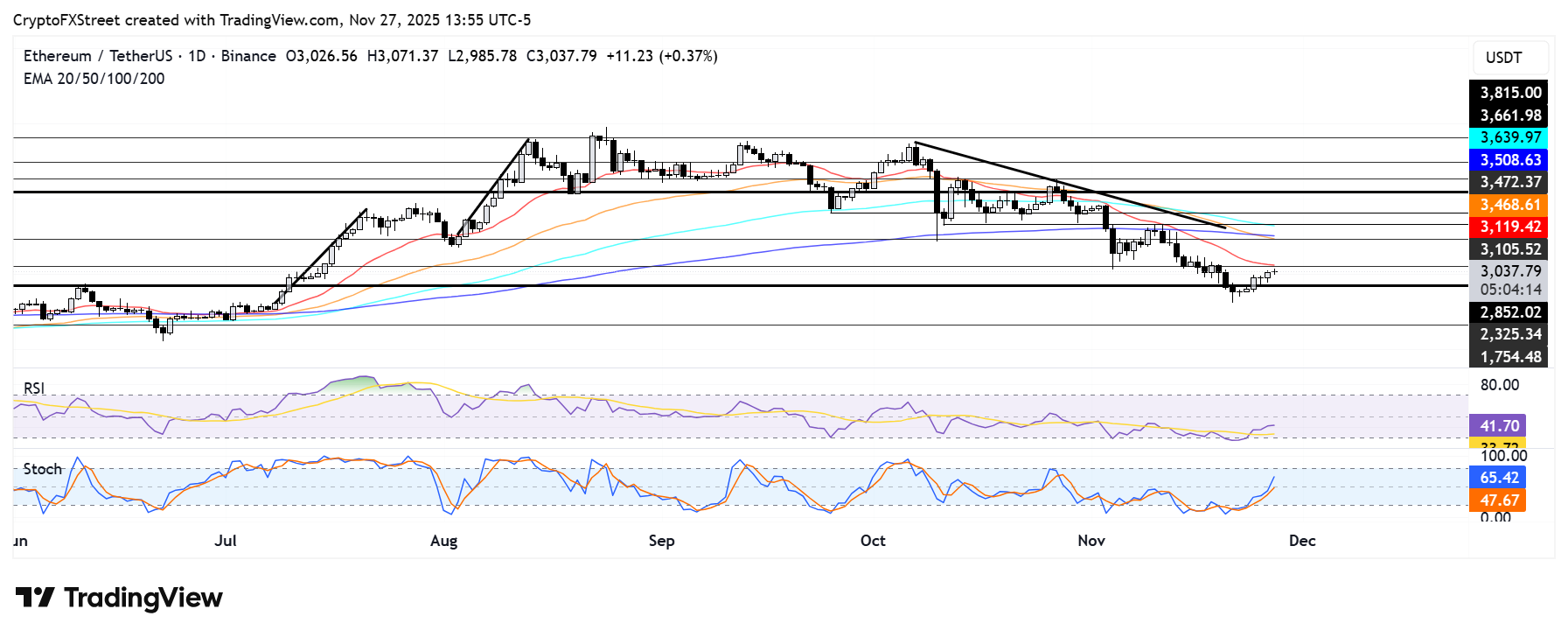Ethereum Price Forecast: ETH tests $3,100 resistance as validators push gas limit to 60 million

Ethereum price today: $3,030
- Ethereum validators have pushed the network's gas limit to 60 million, its highest level in four years.
- The increase comes just a week before Ethereum's Fusaka upgrade.
- ETH could rise to $3,470 if it clears the $3,100 and 20-day EMA resistance.
Ethereum has hit a major scaling milestone after validators reached a consensus to push the mainnet's block gas limit to 60 million.
Without needing any hardfork (or a major network upgrade), the new gas limit became the default automatically on Tuesday, after over 50% of validators favoured the increase, according to data from GasLimit.Pics. The new threshold marks a 2x increase over the past year and the network's highest gas limit level in over four years.
"Just a year after the community started pushing for higher gas limits, Ethereum is now running with a 60M block gas limit. That's a 2× increase in a single year — and it's only the beginning," noted Ethereum Foundation researcher Toni Wahrstätter in a Wednesday X post.
Gas is a unit of measurement for the computational effort required to process transactions and smart contract functions on Ethereum. An increase in the gas limit enables Ethereum to process more transactions and complex smart contract operations, thereby boosting throughput. It can also reduce congestion during periods of peak network activity.
5x gas limit increase incoming in 2026?
Crypto researcher Zhixiong Pan highlighted that the accelerated efforts to raise the gas limit are made possible by key network implementations from EIP-7623 that help safely manage block size. Performance optimization by Ethereum client teams through EIP-7883 and consistent block propagation during stress tests under higher gas limits also aided the transition.
Wahrstätter and Ethereum co-founder Vitalik Buterin said the gas limit could increase by 5x over the coming year. However, Pan noted that such a growth requires "optimizing high-load cryptographic operations (such as elliptic curve computations), controlling state bloat and improving network propagation mechanisms."
The increase comes just a week before Ethereum's next major upgrade, Fusaka. The upgrade, which has already been activated on several testnets, is slated for a mainnet launch on December 3.
Among several upcoming improvements from Fusaka, the most anticipated is PeerDAS (data availability sampling), which will boost rollup throughput and scale Ethereum's data availability capacity.
Ethereum Price Forecast: ETH tests $3,100, 20-day EMA resistance
Ethereum saw $34.2 million in futures liquidations over the past 24 hours, led by $22.1 million in short liquidations, per Coinglass data.
ETH is testing the $3,100 level just below the 20-day Exponential Moving Average (EMA), an indicator that has acted as a resistance since the October 10 leverage flush. The top altcoin could rise to test the $3,470 hurdle if it clears the $3,100 and 20-day EMA resistance.

On the downside, ETH could find support at $2,850, which is near the cost basis of several Ethereum whales.
The Relative Strength Index (RSI) is below its neutral level and is now flattening after a brief rise. Meanwhile, the Stochastic Oscillator (Stoch) has crossed above its midline. The RSI needs to establish a similar move to confirm a return to bullish dominance.







